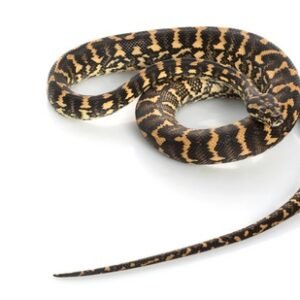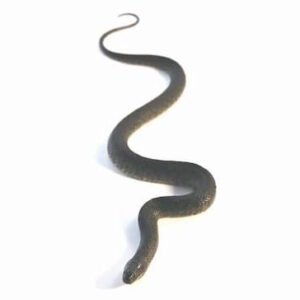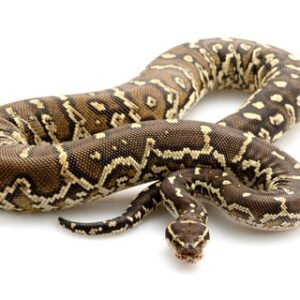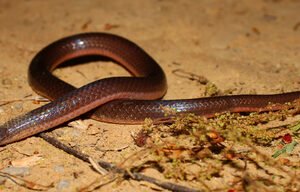The Fascinating World of the Honduran Milk Snake
Introduction to the Honduran Milk Snake
honduran milk snake ,The Honduran milk snake (Lampropeltis triangulum hondurensis) is a captivating subspecies of the milk snake, renowned for its striking appearance and engaging behavior. Originating from the lush tropical regions of Honduras and parts of Central America, these snakes inhabit diverse environments, primarily favoring areas like rainforests and grasslands. Their adaptability to different habitats underscores their resilience in the wild.
One of the most distinctive features of the Honduran milk snake is its vibrant coloration. The signature bright banding, which typically includes bold reds, blacks, and whites, serves as a warning to potential predators, although they are non-venomous. This eye-catching pattern not only aids in camouflage among the colorful flora of their natural habitat but also makes them highly sought after in the pet trade. Enthusiasts appreciate these snakes for their beauty and non-aggressive nature, often choosing them as ideal companions for both novice and experienced keepers.
The significance of the Honduran milk snake extends beyond its aesthetic appeal; it plays an essential role in the ecosystem. As both predator and prey, these snakes contribute to the balance of their habitats by controlling the populations of small rodents and other reptiles. Furthermore, their presence within the pet trade raises awareness about the importance of conservation efforts aimed at protecting their natural habitats and ensuring the sustainability of their populations in the wild.
Overall, the Honduran milk snake’s combination of striking coloration, docile temperament, and ecological importance makes it a remarkable example within the reptilian world. Understanding its origins, habitat, and the factors contributing to its popularity within the reptile community is crucial for appreciating this extraordinary species.
Physical Characteristics and Behavior
The Honduran milk snake (Lampropeltis triangulum hondurensis) is well-known for its vibrant color patterns and distinctive physical attributes. Typically, adult Honduran milk snakes reach lengths of approximately 3 to 4 feet, although some individuals can grow larger, occasionally exceeding 5 feet. Their slender bodies are characterized by smooth scales that are not only appealing but also aid in their movement through diverse habitats.
The coloration of the Honduran milk snake is one of its most striking features. The species exhibits a tri-color banding pattern, predominantly featuring bright red, black, and yellow or white bands. This coloration serves as a warning signal to potential predators, mimicking the appearance of more venomous species in its habitat. The exact pattern and coloration can vary between individuals, with certain populations displaying more vibrant hues while others may have more subdued shades. Additionally, the striking contrast between the bands contributes to the Honduran milk snake’s popularity among reptile enthusiasts.
Behaviorally, the Honduran milk snake is known for its docile temperament, particularly when raised in captivity. This species is primarily nocturnal, exhibiting peak activity during the night when it searches for food. Its diet primarily consists of small mammals, birds, and reptiles, showcasing its adaptability as a constrictor. The Honduran milk snake employs a specific hunting strategy wherein it ambushes its prey. When kept in captivity, these snakes may adapt to a feeding routine, accepting pre-killed or live food. Understanding their feeding habits is essential for potential owners intending to provide appropriate care.
In summary, the physical characteristics and behaviors of the Honduran milk snake contribute to its allure and fascination in both the wild and captivity. Knowledge of its size, coloration, and behavioral traits not only enriches one’s understanding of this species but also enhances the experience for those who choose to keep them as exotic pets.
Care and Habitat Requirements for Keeping Honduran Milk Snakes
honduran milk snake ,Caring for Honduran milk snakes requires an understanding of their natural habitat and specific needs to ensure their health and well-being in captivity. These snakes thrive in environments that closely mimic their native tropical forests. A suitable enclosure should be at least 20 gallons for an adult, with secure locking mechanisms, as these snakes are known to be escape artists.
For substrate, consider using shredded aspen, coconut fiber, or cypress mulch, as these materials can help maintain humidity levels and allow the snakes to burrow. A humidity level between 40-60% is ideal, which can be achieved by misting the enclosure regularly and providing a water bowl large enough for soaking. It’s also crucial to monitor the temperature within the habitat; a gradient of 75-85°F on the cooler side and a basking area of 85-90°F allows the snake to thermoregulate effectively.
In addition to appropriate temperature and humidity, providing hiding spots within the enclosure is essential. Use items such as hollow logs, plants, or commercial hide boxes to give your Honduran milk snake a sense of security. Adding climbing structures can also promote their natural behavior, as these snakes are known for their agility.
Dietary needs for Honduran milk snakes typically consist of appropriately sized rodents, such as mice or rats. Generally, young snakes should be fed once a week, while adults can be fed every 10-14 days. It’s important to offer pre-killed prey to avoid any risk of injury during feeding. Regularly assess your snake’s health by observing its weight and behavior, and adjust feeding schedules or habitat conditions as necessary to maintain optimal health.
Conservation Status and Future Outlook
honduran milk snake ,The Honduran milk snake, known for its striking appearance and non-venomous nature, faces various challenges that threaten its survival in the wild. Habitat destruction is one of the primary threats to this species. Deforestation, driven by agriculture, urbanization, and logging, has resulted in significant loss of their natural habitats, disrupting the ecosystems that support them. Additionally, the illegal wildlife trade poses a serious risk, as these snakes are often captured for the pet trade. The allure of their vibrant colors makes them an attractive option for collectors, further endangering their populations in the wild.
Conservation efforts are crucial for ensuring the survival of the Honduran milk snake. Various organizations and initiatives are working to protect their habitats through the establishment of protected areas and habitat restoration projects. These conservation strategies aim to minimize human impact on the environment and protect the biodiversity that sustains species like the Honduran milk snake. Education and awareness campaigns are also vital in promoting responsible pet ownership, as many individuals may underestimate the importance of sourcing reptiles only from reputable breeders rather than capturing them from the wild.
Ultimately, the future outlook for the Honduran milk snake relies on a combination of effective conservation measures and the commitment of the public. Individuals can contribute by supporting wildlife organizations dedicated to habitat preservation and participating in local conservation projects. By spreading awareness about the importance of protecting this unique species, the public can play a pivotal role in ensuring that the Honduran milk snake continues to thrive in its natural habitat. In conclusion, the collective efforts of conservationists and informed pet owners will be essential in improving the overall conservation status of this captivating snake and fostering a sustainable future for it and its ecosystem.





